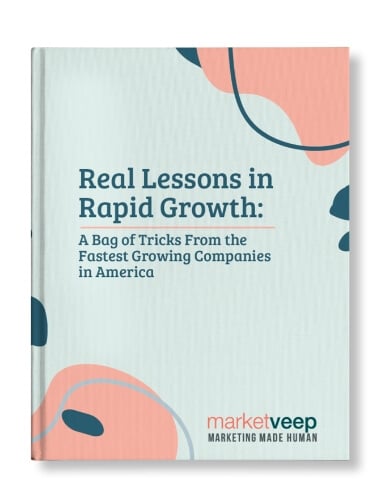Web Design Choices: Traditional vs. Growth-Driven Design


By Market Veep
There are pros and cons to traditional website design and a Growth-Driven website design. However, Growth-Driven Design was created to address many of the inherent issues in traditional website building. There are 10 key differences between the two approaches.
The traditional approach to web development is the way websites have been redesigned for years. In that time, people began to notice that certain flaws and problems popped up constantly. Growth-Driven Design was created to solve many of these problems. That doesn’t mean that Growth-Driven website design have completely replaced traditional websites. There are still many situations where traditional is the smarter approach.
Nonetheless, there is a noticable difference between Growth Driven Design websites and traditional ones, not just in the way they are developed, but also in the way they perform.
1. Decision-Making
When it comes to decision-making about implementations and features of the website, the traditional web design process varies greatly from Growth-Driven website designs.
With the traditional approach, you’ll often make decisions based on assumptions and industry “best practices”. You may get lucky from time to time and these assumptions may play out in your favor, but it's never guaranteed. Not to mention that “best practices” aren’t always entirely accurate.
For years, it was “best practice” to have a carousel of ads and CTA’s on the homepage of your website. Developers now know that carousels are ineffective and generally try to steer away from them. But a couple of years ago they may have put one on your site because it was “best practice.”
Growth-Driven Design is a different approach. All of your decision-making is focused on data. Growth-Driven website designs are meant to be developed for the user, so it only makes sense that decisions are made from user data and test findings. This approach ensures there’s a good reason behind every decision.



2. Creative Bubble
Traditional web design can take months on end to complete. The developers, designers, and marketers all working on the website project can sometimes feel like they’re trapped in a bubble. While in this bubble, a sort of tunnel vision can develop and everyone gets stuck in one way of thinking.
Sometimes it pays to take a step back and view everything from a new perspective:
By breaking the overall workload into small manageable chunks, every time you start something new, you have the ability to collect your thoughts so you don’t get trapped in one way of thinking. You are able to collect new data if needed and then proceed with the best possible information.
3. Depreciation
Websites are a lot like cars. The second they are launched, they begin to lose their value. Every second they are live on the web they begin to depreciate as competitors release new products and improve their own websites.
With traditional websites, you wait until they start losing traction and their effectiveness begins to diminish before undergoing a redesign. It would be like buying a car and not servicing it throughout its life. It will do the job and get you from place to place, but when there is no upkeep being performed on it, eventually it needs to be replaced.
So, why not put the same upkeep you’d put into a car into your website? If you stay on top of all the maintenance and actively work towards improving your website, you won’t have to go out and rebuild your website every few years. Instead, your website will always be relevant and continue to produce results.
4. Risk
Website design is a risky process. Large amounts of money and time are being funneled into a project and it is not always clear if it will have positive results.
That being said, the traditional approach to redesigning a website carries more risk than it needs to. The upfront cost of a traditional project is usually much greater due to the fact that the whole website is being redesigned from the ground up in one go. That’s the same reason why traditional websites take so long to build: The sheer volume of work needed to be done makes the project a lengthy one.
Launch pad websites that are developed using Growth-Driven Design launch in a fraction of the time as traditional websites and have a lesser upfront cost. The risk of an ineffective website redesign is also greatly reduced because the launchpad will be built based on user tests and data collected from the previous website. So, the launchpad already has an advantage. Plus, Growth-Driven Design allows the website to be further optimized, so if some element of the website was not fantastic at launch, it can be reworked and fixed.
5. Turnaround
Along with being costly, websites are notorious for running behind schedule and being delivered late. This all just adds to the risk involved with traditional website designs.
One of the advantages to Growth-Driven Design is the turnaround time. Since a launchpad website gets built and deployed quickly, the turnaround time is a fraction of that of traditional website designs. This can mean a faster return on investment and less downtime on your current website.
6. Expected Timeframe
One of the advantages of traditional web design as opposed to Growth-Driven Design is the project aspect of it. A traditional web design is a project a company can take on every few years that has a set start date, end date, and budget. Companies may prefer this because, at a very high level, it shows progress and a new website got implemented rather than having the project drag on as a multi-year process, even though the results will not be as good.
Growth-Driven website design does have its own set of time frames, though. They may not be as clear cut as a start and end date, but they are still deadlines and timeframes nonetheless. Usually, they are on a much smaller scale and are on a quarterly basis rather than start and finish.
Regardless, it’s easy to demonstrate quick wins to stakeholders using Growth-Driven Design. In many ways, it’s even easier than with traditional web development. Instead of reporting that the website is “about 75% complete,” one could report that the homepage is ready and X number of items on the wishlist have been completed.
7. Scope Creep
Scope creep is something that happens all the time on big projects. Initially, everyone sits down and decides on what needs to get done. They write out a huge list of items and goals and then everyone splits off and begins the work.
Fast forward maybe 4 or 5 weeks into the project. Someone thinks of a fantastic idea they can add to the website. So, the team adds it in to their to-do list. Then, a few days later, someone else asks them to add another item to get done before launch.
This happens several more times. The next thing you know, your initial list has grown substantially and the deadline is a week away. This is not anyone's fault, per say. It’s just the way people think. Over time, they get excited about new projects and come up with new ideas.
Growth-Driven Design cuts back on scope creep because everything is done over time in stages. Tasks are quickly completed on a task by task basis. When those tasks are done, the team then goes back to the wishlist and chooses new items to implement.
Since there is no end date for continuous improvement, ideas that get thought of halfway through the project do not interfere with the overall deliverables. They will all get added eventually, just maybe not right away.
Now, scope creep can still happen if halfway through the launchpad build someone decides to dramatically change the original design. Sometimes, this can’t be avoided and it’s always a risk when it comes to larger projects.
8. Inbound
Inbound marketing and websites go hand in hand. They complement one another like peanut butter and jelly. However, inbound and GDD are like soul mates wishing upon a star and finding each other from across the world.
Inbound is all about attracting customers to your website and guiding them along their buyer’s journey. You can do this through SEO, helpful content, and lead nurturing. Now not only is your marketing focused on bringing in customers, but your website can be tailored to suit your specific buyer personas and create an environment they can thrive in.
With GDD, you can continuously improve your website so it can gradually reach the ideal version for you customers. Instead of living with friction on your site for years,you can fix the problem in your next improvement sprint. There’s also little to no downtime, so you’ll never have to worry about disappointing your users.
9. Workload
One consideration many overlook when wanting to redesign their website is the amount of work it takes to do it. It’s no small task. A new website can take months to complete.
Traditional redesigns take on the whole website at once. The project only ends when everything has been done. This approach allows stakeholders to have a timeframe for the project and get everything done in one go.
With Growth-Driven Design, you build a launch pad website that has the essential content and information on it. Then, over time, developers implement the rest of the content in small and manageable chunks. The overall workload for a Growth-Driven website design is spread out over several months, but delivers a product much sooner than traditional.
10. Adaptability
One of the largest problems with traditional web design is that companies generally won’t touch their website after it has been developed. They might add a page or two here and there, but for the most part it’s left alone. If something happens in the company, the market changes, or one of millions of other unpredictable events happens, your website is now outdated and lagging behind.
Since GDD is a continuous process, it can always be adapting to changes as they occur. Your website stays relevant with the latest information, technologies, or website features. Growth-Driven Design is a much more adaptable approach to web development and can help you make changes to suit your company’s current needs.
Conclusion
Both traditional website design and Growth-Driven website design approach to web development have their pros and cons. However, Growth-Driven Design tries to solve some of the problems traditional web development is known for.
That being said, not everyone wants a website that is a continuous process and would only like to undergo the process for a few months every couple of years. Whichever process you choose, it’s important to understand how the two differ so you may make an informed decision.
Get The Latest From
Market Veep
RELATED ARTICLES

Master Sales Funnel Strategies: Tofu Mofu Bofu!
Between SEO, SEM, and SERPS, we’re always finding clever ways to break down concepts into four...

Why B2B Demand Generation Strategies Work
The sparkly, PR rep cousin of lead generation, this approach is all about growing your audience by...

Key Marketing Strategies for Robotics Manufacturers
In fact, experts project that the U.S. Robotics market is on track to pull in $7.85 billion in 2024...

Get Growing!
Download our eBook and get advice from 8 CEOs of Inc. 5000 companies in their own words.

GREAT MARKETING PARTNER
Market Veep is a great firm that handles all of our marketing efforts. This is the second time that I have used the firm. I highly recommend Market Veep!

Cres F.

EXCEPTIONAL EXPERIENCE
Market Veep's Onboarding Experts in Inbound Marketing are an absolute game-changer! From the get-go, their approach was top-notch. Market Veep's team has undoubtedly set the bar high for excellence in inbound marketing. Five stars aren't enough to commend their outstanding service!

Matthew W.

BEST PARTNER EVER!
As a growing business, setting up our first-ever HubSpot account was a crucial step towards enhancing our marketing and customer management strategies. From the moment we contacted MarketVeep, their team demonstrated professionalism, expertise, and a genuine desire to help us succeed. Overall, our experience with MarketVeep was exceptional, and we couldn't be happier with the results. Thanks to their guidance, we are now utilizing HubSpot to its fullest potential, streamlining our marketing efforts, and nurturing leads more effectively.

Jean M.

SET UP FOR SUCCESS!
We had an exceptional experience with Market Veep! Their team is professional, super organized, and friendly, and I truly enjoyed working with them. They executed on time and made the process super easy with their organization and documentation. In addition, they provided additional guidance and answered my many questions as I was new to HubSpot, and provided documentation resources for future use. We're now set up to leverage all that HubSpot marketing has to offer, and we couldn't have done it without Market Veep's expertise.

Bailey G.

OUTSTANDING WORK
There aren't enough words to describe the outstanding, professional work MarketVeep has provided to our company. From start to finish, the website design/development team at MarketVeep assigned to our project was extremely knowledgable, respectful, efficient and timely. The results went above and beyond our expectations and we could not be more thrilled with the improvements to the user experience on our website! Bravo MarketVeep, we'll absolutely be back with more projects!

Nadine B.

5 STARS FOR MARKET VEEP!
We had a fantastic experience with Market Veep! Their expert team seamlessly guided us through implementing HubSpot and provided comprehensive training across Sales, Service, and Marketing Hubs. Their knowledge and support significantly enhanced our workflow and overall efficiency. Highly recommend Market Veep for top-notch HubSpot solutions!

Anneke C.







